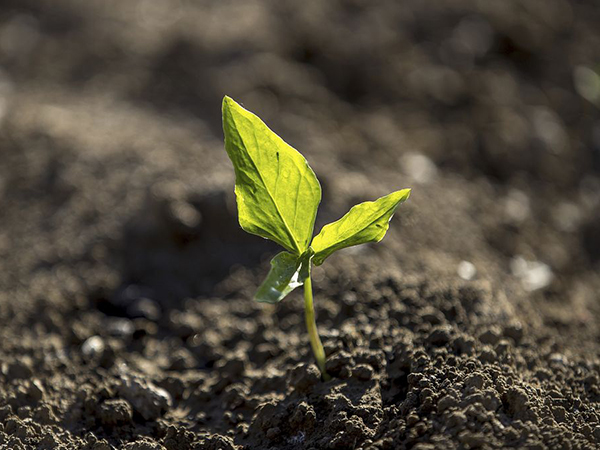Maximizing Harvests and Soil Health: A Guide to Crop Rotations in Your Home Garden
|
Apr 24, 2024 - By the dedicated team of editors and writers at Newsletter Station.

|
The ancient agricultural practice of crop rotation can be a game changer when it comes to maintaining a thriving home garden. Crop rotation involves systematically changing the types of crops you plant in different areas of your garden each year.
This practice offers numerous benefits, including enhanced soil fertility, reduced pest and disease pressure, and increased yield. In this guide, we'll delve into the art and science of crop rotations to help you make the most of your garden space while promoting its long-term health.
Understanding the Basics of Crop Rotation:
Crop rotation is based on diversifying the crops you grow in a specific area over time. Different plants have varying nutrient requirements and can influence the soil in distinct ways. By rotating crops, you prevent the depletion of specific nutrients and the buildup of pests and diseases associated with certain crops.
Step-by-Step Guide to Implementing Crop Rotations:
- Plan Ahead:
Start by dividing your garden into several sections or beds. This will allow you to rotate crops within these designated areas each growing season.
- Know Your Plant Families:
Crops are often grouped into families with similar characteristics, nutrient needs, and vulnerabilities. Some common plant families include the nightshade family (tomatoes, peppers, eggplants), the brassica family (cabbage, broccoli, kale), and the legume family (peas, beans). Understanding these groupings will guide your rotation plan.
- Create a Rotation Schedule:
A typical rotation cycle spans three to four years, but this can vary depending on the specific crops you grow. Plan your rotations so that plants from the same family are not planted in the same area more frequently than every three to four years.
- Mind the Nutrients:
Different plants extract different nutrients from the soil. For example, legumes are known for fixing nitrogen in the soil, which benefits subsequent crops. Root crops like carrots and beets have minimal impact on soil fertility. Following a rotation plan can prevent the exhaustion of specific nutrients.
- Break the Pest and Disease Cycle:
Certain pests and diseases prefer specific plant families. By rotating crops, you disrupt their life cycle and reduce the risk of infestations. For instance, if your tomatoes suffered from a soil-borne disease last year, planting them in a different area this year can help break the cycle.
- Cover Crops:
During off-seasons, consider planting cover crops like clover, rye, or buckwheat. These plants protect the soil from erosion, improve soil structure, and can even be turned back into the soil to add organic matter and nutrients.
- Monitor and Adapt:
Keep a gardening journal to track the performance of different crops in various areas of your garden. This will help you refine your rotation plan, optimizing it for your specific climate and soil conditions.
Benefits of Crop Rotations:
- Improved Soil Fertility:
Different crops utilize different nutrients. By rotating crops, you ensure the soil remains balanced and rich in essential elements.
- Pest and Disease Management:
Crop rotations disrupt the habitat of pests and diseases, reducing the likelihood of infestations and outbreaks.
- Sustainable Gardening:
By reducing the need for synthetic fertilizers and pesticides, you contribute to a more sustainable and eco-friendly gardening approach.
- Higher Yields:
Healthier soil and fewer pest problems often translate to better crop yields and quality.
Crop rotation is an invaluable technique that has stood the test of time. By diversifying the plants you cultivate in your home garden, you promote soil health, minimize pests and diseases, and maximize your harvests.
Whether you're an experienced gardener or just starting, incorporating crop rotations into your gardening routine will undoubtedly lead to more productive and vibrant garden seasons for years to come.
Unlock the Power of Email Marketing
Harness the potential of email marketing with Newsletter Station. Reach your target audience, drive conversions, and achieve your business goals.
|
More Blogs
| May 1, 2024 |
Tips to Help You Start an Edible Garden
|
| Apr 24, 2024 |
Maximizing Harvests and Soil Health: A Guide to Crop Rotations in Your Home Garden
|
| Apr 17, 2024 |
10 Creative Garden Edging Ideas to Elevate Your Landscape
|
| Apr 10, 2024 |
How to Ensure Your Garden Survives During Your Vacation
|
| Apr 3, 2024 |
Exploring the Green World: Essential Gardening Terms You Should Know
|
| Mar 27, 2024 |
How to Design a Front Entry Garden: Welcoming Beauty at Your Doorstep
|
| Mar 20, 2024 |
Make a Wood Pallet Garden: A Green Thumb's Guide
|
| Mar 13, 2024 |
Seeds or Seedlings? Get Your Garden Started
|
| Mar 6, 2024 |
How to Till a Garden: A Step-by-Step Guide to Cultivate Your Green Haven
|
| Feb 28, 2024 |
Perennial Vegetables to Plant for Years of Produce
|
| Feb 21, 2024 |
The Green Thumb's Guide to In-Garden Composting: Techniques and Tips
|
| Feb 14, 2024 |
Enhancing Your Garden with Straw Mulch: A Comprehensive Guide
|
|
|
|